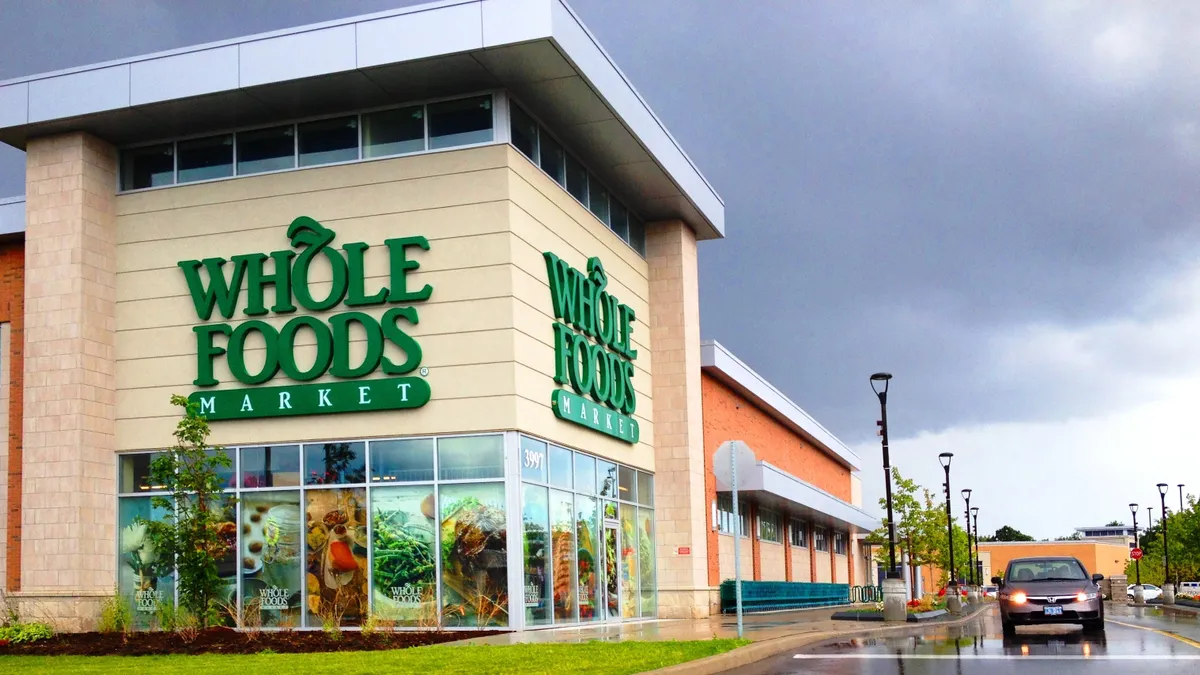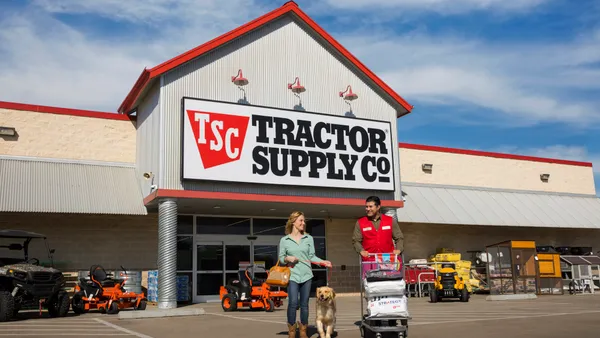Dive Brief:
- Amazon extended its savings for Prime members to Whole Foods Market stores in 10 additional states this week. That brings the program's footprint to 23 states and nearly half the grocer's store count.
- The promotion, which offers Prime members 10% off select products, is also available at Whole Foods Market 365 stores nationwide, as well as for customers in eight markets who have their groceries delivered via Prime Now. Customers can take advantage of the Prime savings by downloading the Whole Foods Market app, signing into their Amazon account and scanning a special QR code at checkout.
- In a company press release, Whole Foods president and chief operating officer A.C. Gallo said the timeline to expand the Prime savings is being accelerated based on positive customer feedback and "successes we’ve seen over the past month."
Dive Insight:
Considering Whole Food's official announcement about the Prime discounts came less than a month ago, it's expansion to nearly half of the company's stores this week is lightning quick, and shows just how popular the program is with shoppers. It's also a competitive play as both Walmart and Target step up their grocery delivery and curbside services.
This acceleration, along with a cash-back credit card and free two-hour delivery, should provide plenty of incentive for the tens of millions of Prime members to visit their nearest Whole Foods. It may also entice consumers to sign up for Prime after shying away from Whole Foods because of its "Whole Paycheck" reputation.
Amazon’s footprint in the highly competitive grocery space is dependent on Whole Foods’ performance, and these Prime discounts seem to be driving store sales and traffic so far. But Amazon, unlike Walmart and Target, has a thin line to walk. Too much discounting could tarnish the image of Whole Foods as more of an upscale retailer, while not enough price cuts would perpetuate its spendy reputation. By offering selective discounts to Prime members, the grocer improves its pricing image without taking a big hit on profitability.
Another challenge is whether or not this move – offering discounts on some products to some shoppers – furthers concerns about Amazon’s "disjointed" grocery approach. As Bloomberg points out, Amazon now has at least eight "somewhat overlapping services" from which people can buy food or goods.
Likewise, it’s important that Whole Foods doesn’t flirt with being all things to all people and stray too far from its specialty roots, which it has spent 40 years establishing.
Competition isn’t expected to wane anytime soon in this space, particularly as the three retail giants (and others such as Kroger) expand their discounts and services. Pricing will likely emerge as the major differentiator between the companies, and on that front, Whole Foods has carved out a unique position












